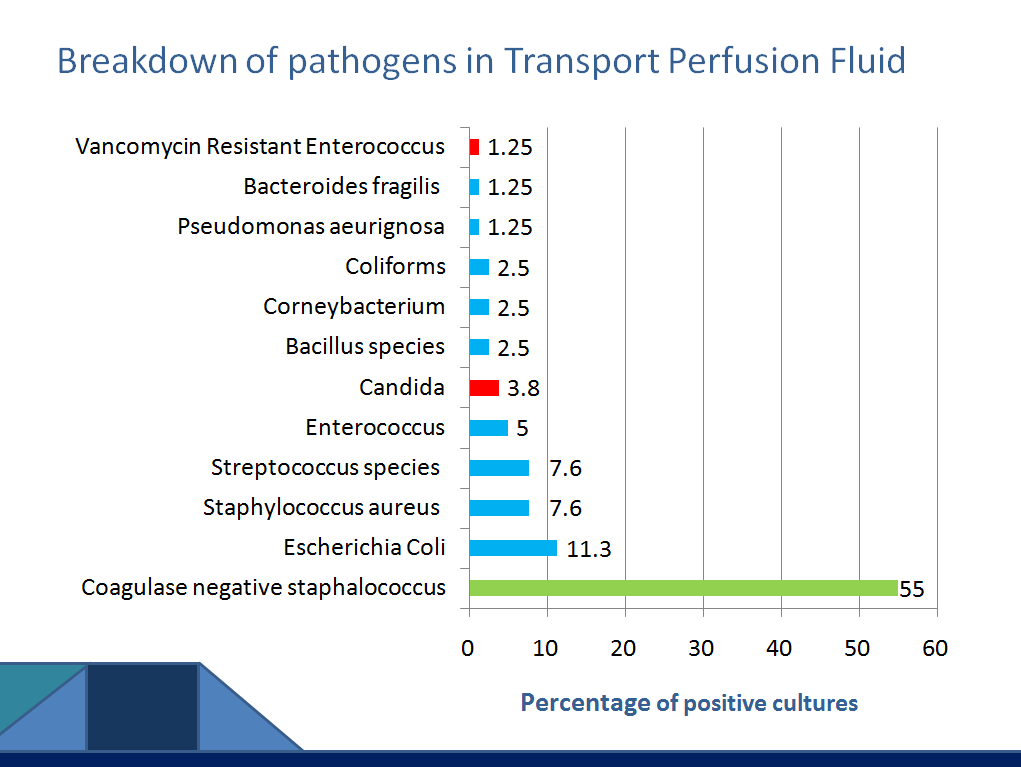Clinical Outcomes of Kidney Transplant Recipients with Positive Perfusion Fluid Cultures: A Single Centre Retrospective Study
Sally Black1, Shafiq Chughtai1, Amy Page1, Atul Bagul1.
1Leicester General Hospital, Leicester, United Kingdom
Introduction: Transplant perfusion fluid (TPF) optimises the storage of organs for transplantation; however it can be a culture medium for pathogenic bacteria. Clinical practice in UK involves routine culture of TPF however results take several days. We did a retrospective study to assess the value of TPF in deceased donor renal transplant recipients.
Materials and Methods: 173 patients who received renal transplants between January 2014 and October 2016 were included in the study. Electronic data records were used to collect TPF culture result, antibiotics used, length of hospital stay and presence of septic complication in recipients.
Results: 106 patients received DBD and 67 had DCD organs. 54.3% (n=94) had a negative TPF culture (Cl 46.88-61.72) and 45.7% (n=79) had a positive TPF culture (CI 38.28-53.12).21% (n=36) were diabetic and 4.3% (n=6) had post transplantation diabetes mellitus.
Coagulase negative staphylococci represented 55% of positive samples. E.Coli was the most common pathogenic bacteria found (11.3%, n= 9). Infection developed in 45.7% (n=43) of patients receiving a kidney with negative TPF culture compared with 32.9% (n=26) with a positive TPF culture. 7.7% (n=6) of patients with a positive TPF culture developed an infection identified to be caused as the same organism as that from the TPF.

Recipients with delayed graft function (DGF) had an infection rate of 54.9% (n =51). Patients without DGF had infection rate of 32.8% (n=116). This association is not statically significant (p=0.07) but may warrant further investigation.
Patients with positive TPF culture who received prophylactic antibiotics had similar length of hospital stay as patients not receiving antibiotics. Urinary tract was the commonest site of infection (50%). Patients with diabetic nephropathy or chronic pyelonephritis had higher rates of infection.
Conclusion: Positive TPF culture was not associated with higher rates of infection or DGF. The likelihood of infection was higher in diabetic patients. Length of hospital stay was not reduced by use of prophylactic antibiotic, even in patients with positive TPF culture. We suggest that a decision to give antibiotic should be based on patient's clinical status and virulence of pathogens found. Further studies are needed to establish role of prophylactic antibiotics in preventing septic complication in recipients with positive TPF culture results.
